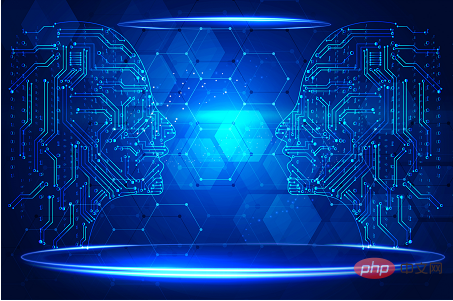

Self-driving cars equipped with machine learning algorithms can make better decisions, recognize and classify objects, and interpret situations.
Humanity has made great progress in the daily operations of the world, and the integration of technology will only become closer. Artificial intelligence and its subcategory, machine learning, have caused such huge ripples throughout this era of innovation that even self-driving cars are the future. Some multinational companies, such as Tesla and Google, have launched self-driving projects such as Waymo One to promote self-driving taxi services made possible by machine learning. Its role in this innovation is expanded below.
How machine learning is changing the rules of the game for self-driving cars
A self-driving car, also known as a self-driving car or robot car, is a whole that integrates machine learning, vehicle automation hardware and software . The car's hardware continuously collects data about its surroundings, while the software classifies the collected data and further deploys it into machine learning algorithms. ML algorithms essentially enhance their decision-making with data collected from previous events and determine the best data-driven action. Simply put, ML algorithms increase their effectiveness as data increases.
In the real world, the technologies that will impact the car's upcoming success are sensing cameras, radar and lidar, allowing it to clearly assess speed, position, size and more of its surroundings. Radar wave pulses assist in detecting obscured objects at night and determining their speed and position. Additionally, these cars utilize inertial measurement units to control the vehicle's acceleration and position.
Machine learning in autonomous vehicles is the collaboration of multiple algorithms that contribute to the effective operation of autonomous driving.
AdaBoost is a basic algorithm used to enhance the learning process and performance of self-driving cars, eliminating the shortcomings of machine learning. It combines the output of various low-level algorithms and integrates more efficient algorithms to achieve successful prediction and decision-making of the car.
SIFT is scale-invariant feature transformation, which detects partially blurred objects through correspondence with the database. The algorithm performs image matching by assigning numerous points to numerous objects, which help the algorithm identify the objects. Essentially, if a stationary vehicle is partially hidden behind a boulder, the self-driving car will search its database through points on the vehicle.
Similar to AdaBoost, the TextonBoost algorithm merges multiple low-performance classifiers into a high-performance classifier to accurately identify objects. It exploits the background, shape and appearance of an object and identifies it by its characteristics.
YOLO is one of the best algorithms for identifying and grouping objects, it analyzes images by dividing them into segments. Each segment has bounding boxes and predictions to classify the image.
In short, we have only explored the tip of the iceberg in artificial intelligence and machine learning technology, but self-driving cars are undoubtedly paving the way for the future.
The above is the detailed content of How machine learning can power self-driving cars. For more information, please follow other related articles on the PHP Chinese website!




